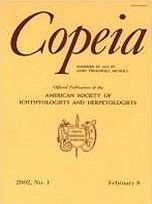Boa constrictors inhabiting islands off the coast of Belize have been historically collected for the pet trade, and enthusiasts have described these as a dwarfed race. Additionally, it has been suggested that these boas feed on birds, yet no dietary data are available. I initiated a mark-recapture study of five Belizean island populations and have accumulated data on mainland individuals to describe the natural history and population biology of boas in this region. Results indicate that adult island boas from West Snake Cay eat small passerine birds (gray-breasted martins, Progne chalybea) that average 7% of the snake's mass. Fecal samples from boas on other islands contained bird feathers and, although these feathers were unidentifiable, this indicates that other island boa populations also consume birds. Compared to mainland boas, island boas have significantly smaller litters of smaller neonates (lighter and shorter) and have extraordinarily small population sizes (range 8–88 total individuals). According to IUCN criteria, island boas can be classified as Endangered based solely on total population and subpopulation sizes. Collection data, gathered from the literature and unpublished sources, revealed a decline in one island population (Crawl Cay) that is currently estimated to consist of eight free-ranging individuals. Island populations of Belizean boas warrant immediate conservation priority due to their low reproductive output, small population sizes, and continued demand in the pet trade.
BioOne.org will be down briefly for maintenance on 17 December 2024 between 18:00-22:00 Pacific Time US. We apologize for any inconvenience.
How to translate text using browser tools
1 December 2005
Natural History and Conservation of Island Boas (Boa constrictor) in Belize
Scott M. Boback
ACCESS THE FULL ARTICLE





